By 1939, Fred Astaire and Ginger Rogers had made nine films together at RKO studios. Their first film together, Flying Down to Rio (1933), featured the duo in supporting roles. This wasn’t even supposed to be a vehicle for Fred and Ginger, the film starred Dolores Del Rio and Gene Raymond. However, they excited audiences so much in “The Carioca,” that RKO was quick to re-team the duo in their second vehicle, The Gay Divorcee. When ‘Rio’ was made, Ginger was the bigger star. She had already appeared in almost two dozen films, including: 42nd Street and Gold Diggers of 1933. Fred on the other hand, was primarily a Broadway performer and had only appeared in one other film (Dancing Lady, where we’re treated to Joan Crawford’s awful dancing), where he played a fictionalized version of himself.
The Gay Divorcee was a huge hit and RKO was quick to keep teaming Fred and Ginger up in picture after picture. Between 1933 and 1939, the duo had appeared in nine films: The Gay Divorcee (1934), Roberta (1935), Top Hat (1935), Follow the Fleet (1936), Swing Time (1936), Shall We Dance (1937), Carefree (1938), and The Story of Vernon and Irene Castle (1939). By this point, both Fred and Ginger were ready to move onto other projects. Ginger, especially, was ready to prove herself as more than just a dancer in fluffy romantic films. She had achieved some success in the ensemble dramatic film, Stage Door (1937), and wanted to do more in this realm.
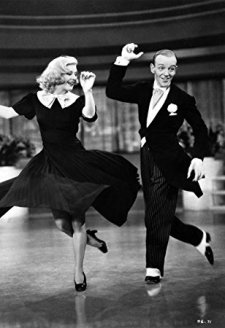
Fred, I don’t believe had acting aspirations as lofty as Ginger, but I believe he did want to try some more inventive dance routines. Not that Ginger held him back, but seeing his performances where he dances solo, Fred seems to have more fun dancing–perhaps because he can do a more technical routine. After his initial partnership with Ginger ended, Fred appeared in a few more musicals with a variety of dancers: Broadway Melody of 1940 (w/ Eleanor Powell), You’ll Never Get Rich (w/ Rita Hayworth), You Were Never Lovelier (also w/ Rita Hayworth), and Yolanda and the Thief (with Lucille Bremer). By 1946, Fred was tired of making films and retired.
Meanwhile, Ginger’s career was only getting bigger and bigger. In 1940, Ginger appeared in one of her first major dramatic roles, Primrose Path with Joel McCrea. I really like this film. In this film, Ginger plays a woman who hails from a family whose tradition is prostitution. Both Ginger’s grandmother and mother are prostitutes. Ginger, understandably, does not want to follow in the family business. She ends up meeting and marrying McCrea who is unaware of her family’s history. Later in 1940, Ginger gets the role of a lifetime, the title role in Kitty Foyle.
When Ginger was first given the book for Kitty Foyle (for which RKO had just purchased the film rights), she was not impressed. As she says in her 1991 autobiography, Ginger: My Story:
“As Howard [Hughes] and I were driving toward his residence, I glanced at my copy of Kitty Foyle. There were explicit love scenes in it that were quite disturbing to me. As I read these passages, I found myself passing judgement on them. “That could never pass the censor board. So what good is it for me to spend time reading it?” I was really embarrassed that RKO would send me something like this. I snapped the book shut and quite deliberately, through it in the corner of Howard’s car.”
Ginger spoke to her mother, Lela, about the trashy book. Lela very matter of factly, told Ginger that the studio would obviously have to tone down the sexual content as it would be impossible to film it. The entire story would essentially have to be re-written. After speaking with Lela, the producer and writer Dalton Trumbo (who was hired to write the script), Ginger’s qualms about accepting the part had been squashed. Kitty Foyle ended up being a major hit, winning Ginger the Best Actress Oscar.
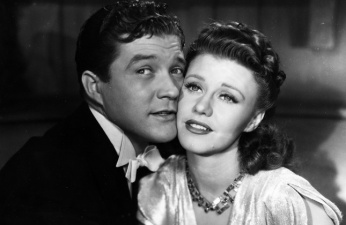
After Kitty Foyle, Ginger continued to act in dramatic films but also dabbled in comedic and noir roles as well. Ginger even went back to her roots and appeared in more musicals. One of my personal favorites of Ginger’s 1940s career is her turn in Billy Wilder’s directorial debut–The Major and the Minor. This film is hilarious. However, you really have to suspend your disbelief when it comes to the premise. If you can accept co-star Ray Milland believing that Ginger’s character is “eleven, twelve next week” then you will enjoy this film.
The Major and the Minor gave Ginger the opportunity to show off her broad comedy skills. The premise of this film is that Ginger has been trying to make a-go in New York City for a year but to no avail. She decides to return home (to Stevenson, Iowa) via train. However, she finds out that she doesn’t have enough money to pay an adult fare. She does however have enough money to purchase a children’s ticket. She gives herself a “makeunder” by removing her makeup and putting her hair in pigtails. She modifies her clothing to make it look like something a child would wear. She purchases her ticket.
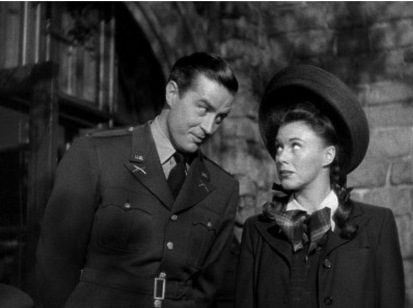
On the train ride, Ginger attracts much attention from the conductor and train staff who are not buying her story that she’s “eleven, twelve next week” and that she’s tall because she’s “from Swedish stock.” Ginger has some very funny scenes trying to rationalize her grown-up appearance to the adults. Ginger does take her child shtick a little far as she’s supposed to be 12 but she acts 5. On the train, Ginger meets Ray Milland, a major who teaches at an all boys’ military school. Milland can not see out of one eye. With his blurred vision, he buys Ginger’s story that she’s 12. Ginger ends up staying with Milland, Milland’s fiance and her sister for a few days. Complications ensue when Ginger attracts the attention of the male cadets at the military academy and Milland’s fiance who is just not buying Ginger’s story.
I gave The Major and the Minor a lot of space in my article about Fred and Ginger, because it is probably my favorite of all of Ginger’s post-Fred films. She also made one of my favorite Christmas-time films, I’ll Be Seeing You, where she plays a woman convicted of involuntary manslaughter and is serving time in prison. She is given an eight-day furlough so that she can spend Christmas with her family. During this furlough, she meets and falls in love with Joseph Cotten who is on a 10-day leave from the military hospital he’s been staying at. I’ll Be Seeing You is a sweet, romantic film and is perfect for the holiday season.
In 1948, Gene Kelly was all set to appear opposite Judy Garland in Irving Berlin’s Easter Parade. However, right before filming was to begin, Gene broke his ankle playing volleyball. Feeling bad, Gene coaxed Fred into coming out of retirement and replacing him in Easter Parade. Fred agreed and this began a renaissance of some sorts of Fred’s career. Easter Parade is one of my favorite films and as much as I love Gene, I cannot picture anyone else in this film other than Fred.
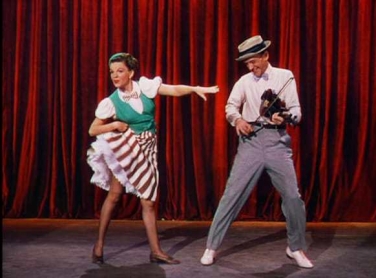
Easter Parade takes place in 1912-1913 New York City. Fred plays a dancer who is part of a popular dance team. His partner, Ann Miller, casually drops a bombshell on Fred: she’s been offered a solo show and has accepted. Ann it seems, wants to be thought of as more than just Fred’s dance partner (Sound familiar?). Upset, Fred goes down to a restaurant/bar to figure out a game-plan for his career. While at the restaurant, Fred spots Judy, a singing waitress. He makes a “My Fair Lady” type bet with the bartender. He will pick Judy out of the lineup and turn her into his next dance partner. The problem is Judy can’t dance.
Fred tries to teach Judy how to dance and she does okay, but is struggling. It finally occurs to Fred that perhaps they should base their act around their respective talents. Fred will dance and Judy will sing. Perfect! With this change, Fred and Judy are a sensation and are soon auditioning for the famed Florenz Ziegfeld’s Ziegfeld Follies revue. There is some drama between Ann and Fred and Judy and Fred that threatens to break up the act. However, like all these films go, the drama is resolved and all is well by the end.
Easter Parade was a smash hit and MGM was eager to re-team Fred and Judy for another film: The Barkleys of Broadway. However, by this point in her life, Judy was in bad shape and ended up being fired from production. In perhaps a bit of a publicity coup for the film, MGM hired Ginger to take Judy’s place. It had been ten years since their last pairing. I don’t know if this is true, but I read somewhere that Judy, upset at being replaced, sent Ginger a shaving kit as a passive aggressive “congratulations” gift. It seems that Ginger had a lot of peach fuzz on her face and used makeup and filters to hide it on screen. I hope this story is true, because it is hilarious.
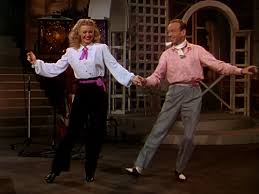
The Barkleys of Broadway very much resembled Fred and Ginger’s real professional relationship: except in the film, they played a married couple. In the film, Fred and Ginger are at the peak of their popularity, a sensation. While at one of their shows, Ginger meets a playwright who suggests she take up dramatic acting. Ginger tries to keep it a secret, but Fred finds out and the couple separate. The Barkleys of Broadway was a big hit and continued to revitalize Fred’s career. Curiously enough, Ginger’s career was starting to wind down. She didn’t really make many big films in the 1950s, except for one of my favorites, Monkey Business with Cary Grant and a young Marilyn Monroe.
Starting with Easter Parade, Fred was becoming more innovative in his dance routines. In Easter Parade, Fred used trick photography in “Steppin’ Out with my Baby” to make it appear like he was dancing in slow-motion. In Royal Wedding, Fred again uses trick photography to make it look like he was dancing on the ceiling. The Barkleys of Broadway features Fred’s “Shoes with Wings” routine where he dances with a bunch of shoes.
My other absolute favorite film from the later part of Fred’s career is Funny Face with Audrey Hepburn. In this film, Fred plays Dick Avery, a fashion photographer for Quality magazine. He is tired of photographing the same vapid models, who are pretty, but don’t really bring anything to his photograph. His editor, Maggie Prescott (hilariously played by Kay Thompson, whom I wished had made more films), agrees that the magazine needs a new look. They want to find someone who is as smart as they are beautiful. They end up barging into (and destroying) the Manhattan bookstore: Embryo Concepts. While at the bookstore, they find Audrey Hepburn, the shy shop clerk.
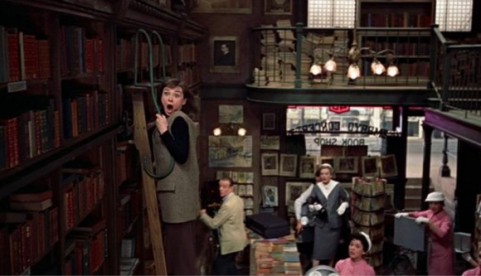
Fred and Kay photograph the comic book reading model, Marion, but she’s just blah. All beauty but no substance. Fred ends up getting a photo of Audrey during the shoot. Back at the magazine office, Fred is developing his photo of Audrey and sees that she has that je ne sais quoi that he and Kay have been looking for. Kay calls up Audrey’s shop and orders some random books as a pretense to get her to come down to their office. Audrey shows up and before she knows it, she’s been swept up in the world of modeling. Audrey accepts the modeling work, as she’s informed that she’ll get to go to Paris. Paris is where the renowned philosopher, Emile Flostre, regularly holds lectures about empathicalism–a philosophy that Audrey is very interested in. Complications ensue when Audrey prioritizes her personal interests above those of her employer’s. One of my favorite scenes of Funny Face is Fred and Kay’s dance at the beatnik hangout–“Clap Yo’ Hands.”
By the 1960s, both Fred and Ginger appeared infrequently in films but kept busy pursuing other interests. Fred had his own television show for awhile and Ginger was a hit in theater, even appearing on London’s famed West End for a period. Fred’s television career was very successful, his programs won numerous Emmys and revived an interest in dance. In 1985, Ginger realized a lifelong ambition–to direct a play. She directed an off-Broadway production of Babes in Arms. Fred passed away in 1987 and Ginger in 1995.
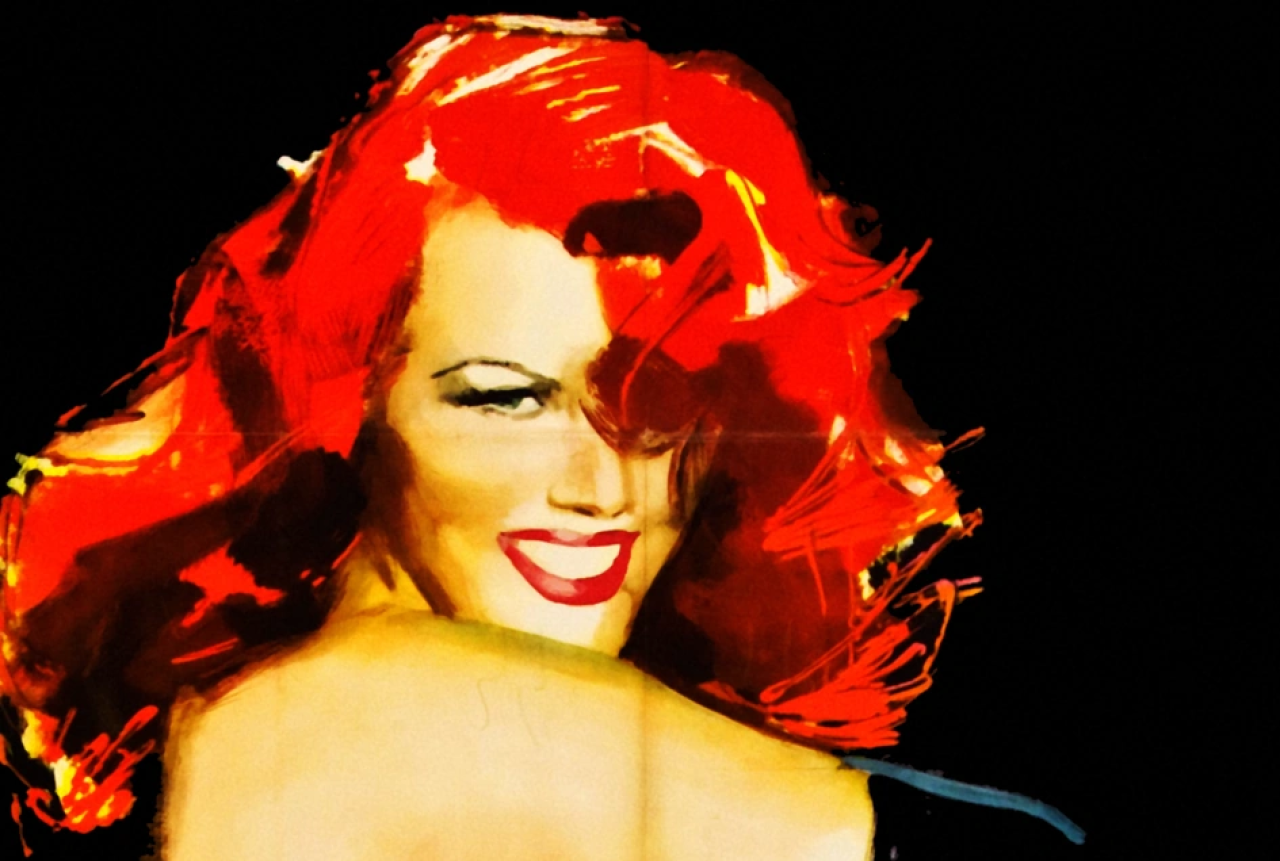
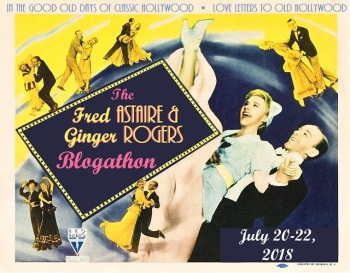
Pingback: THE FRED ASTAIRE AND GINGER ROGERS BLOGATHON HAS ARRIVED – In The Good Old Days Of Classic Hollywood.
It was so interesting to read how their careers carried on after their partnership. Both had such success in their lives, yet their collaborations have helped make them into icons, something I don’t think they always appreciated given their many other accomplishments. Whether together or separate, though, Fred and Ginger were magical performers, as your post wonderfully demonstrated. Thanks for contributing to our blogathon!
LikeLiked by 1 person
Thank you so much! I agree Fred and Ginger were fantastic. For whatever reason, I used to not like Ginger Rogers, I don’t know why. Then I saw her in “The Major and the Minor” and suddenly developed a new appreciation for her. Now she’s one of my favorites! It’s funny how that works.
LikeLike
Thanks for participating in the blogathon and for contributing this fantastic and well written article. I think that the Fred and Ginger collaborations helped pave the way for their future success as solo actors. Of course they still would have achieved stardom but the magic that the two made together did help their solo careers later on.
I’ve also hosted another blogathon, and I would love to invite you join in. Here is the link.
LikeLiked by 1 person
Thank you! I love Lauren Bacall. I will definitely check this out!
LikeLike